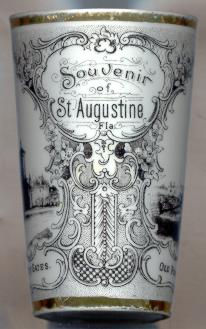

|
| UNITED STATES OF AMERICA | |
| FLORIDA | |
| St. Johns County |

|
Saint Augustine on the northeast coast of Florida is the oldest European settlement on what is today the
United States. The Spanish explorer Don Pedro Menendez de Aviles landed here on 8 September 1565 and named the
place after the saint of the day (28 August) when land was first sighted. Another Spanish explorer, Juan Ponce
de León had landed near here in 1513 and named the land la Florida in honour of Pascua florida, flowery
Easter. The land belonged to Spain until 1763 when it passed to Britain. Spain regained Florida in 1784 but ceded
it to the United States in 1821. For more than 200 years, St. Augustine had served as the governmental centre
of East Florida. When East and West Florida were united to become a US territory, Tallahassee was chosen as the new
capital in 1824, because it was located roughly halfway between Pensacola and St. Augustine. Florida was
admitted to statehood in 1845. The history of St. Augustine as a resort community goes back to the late 1880s
when Henry M. Flagler, co-founder of Standard Oil, built the first two hotels. In 1895, Flagler founded the Florida
East Coast Railway to bring in visitors from the North to his hotels in St. Augustine, Palm Beach and Miami.
The 

The (see also list of other basilicae minores depicted on glasses of this collection)
The 
| |||||||
![[scale]](lineal.jpg)